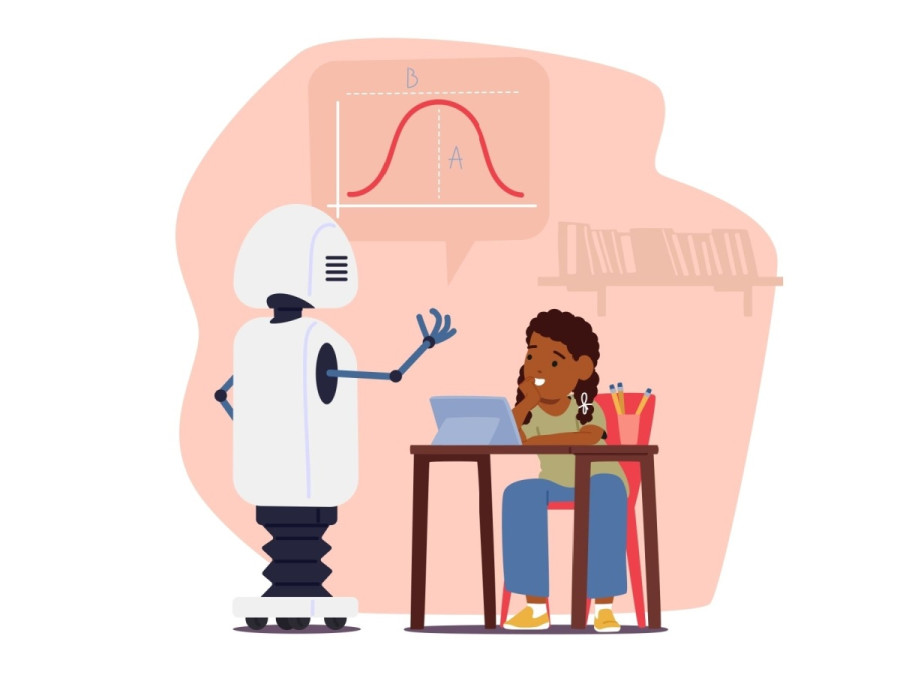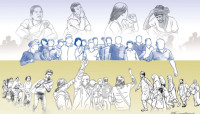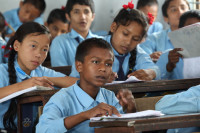Columns
AI for teaching
There is a dire need to strengthen the skills Indian students need to be attractive to future employers.
Azra Ismail & Aditya Vishwanath
India is facing an employability crisis. The India Employment Report 2024 highlights that young people between the ages of 15 to 29 account for almost 83 percent of all unemployed people in India. Of these, nearly all are considered “educated unemployed”, having either had a secondary or tertiary education.
Youth job participation is low, especially among women, with approximately 33.4 million women engaging in paid work in 2022. Around seven to eight million young people are projected to be added to the workforce every year, yet there are not enough dignified jobs. About 115 million more jobs are estimated to be needed by 2030 to absorb both underutilised workers and the incoming labour force. For those who do find employment, jobs are frequently informal, low-paying and may not match people’s qualifications, leading to disguised underemployment where their skills are underutilised.
In all these cases, young people are unable to secure their goal of resilient and dignified livelihoods—jobs that are not vulnerable to automation and offer potential for socioeconomic growth, rather than maintaining the status quo based on class/caste/gender, such as delivery workers or domestic work.
An education failure
One thing is clear: India’s education system has failed to prepare them for their future employment. A recent study with 35,000 young people aged 14 to 18 years across India revealed that while young people remain in school longer compared to 2017, there does not seem to have been much change in their foundational literacy and numeracy skills compared to earlier generations. In some instances they’re even going backwards. For example, 76.6 percent of 14 to 18-year-olds in 2017 could read a Std II level text compared to 73.6 percent in 2023.
The emphasis on rote learning rather than foundational skills such as critical thinking, problem-solving, communication and collaboration has resulted in a mismatch between the skills demanded by employers and the job readiness of youth entering the market, even those with a degree. There is a dire need to strengthen the foundational skills of Indian students to improve their job-readiness, right from their earliest years of school. And given the large number of people affected, any solutions will need to be able to be delivered across the country.
To bridge this gap at scale, it is crucial to democratise access to education and training resources for students and youth. This could take the form of sparking a mass movement for hands-on education and moving away from a pedagogy that celebrates rote learning and memorisation. Leveraging recent advances in artificial intelligence can provide practical and customisable support and guidance for teachers and students at scale, and help youth be both resilient and future ready.
Tech-based economy
India is transitioning to an increasingly tech-based economy but without a clear pathway for developing more resilient job opportunities at scale. AI and automation are transforming industries, enhancing productivity but also spelling the end of more routine jobs. This uncertainty makes it critical that young people have strong skills to be able to re-learn and pivot in response to a changing market.
Manufacturing, healthcare and agriculture in India require a workforce that can update and adapt its skills in keeping with changing tools and technologies. Giving youth strong foundational knowledge in STEAM subjects—science, technology, engineering, arts and maths—as well as specific skills in AI and robotics, will be crucial to them successfully navigating this shift.
This calls for a fundamental shift in the way teaching and learning takes place in classrooms at all levels: K-12, higher education, vocational and beyond.
Shifting educational practices
A culture of hands-on learning is being introduced in some classrooms in response. This involves learners collaborating on making, breaking and remixing materials and ideas so that they are strengthening their abilities to engage in problem-solving, connect interdisciplinary ideas and develop foundational critical thinking skills associated with the subjects they are otherwise passively reading.
Organisations such as MakerGhat offer a transformative educational model designed to equip students with essential foundational skills such as problem-solving, confidence in their own abilities, critical thinking and collaborative communication, particularly in relation to STEAM topics. This approach leverages the power of hands-on making and tinkering.
Most recently an AI large language model-powered solution nicknamed MakerDost has been introduced to shape how teachers and students engage in learning. MakerDost, a WhatsApp chatbot launched earlier this year, is designed to support hands-on learning for both teachers and students. For young learners, the programme offers activities aimed at building critical thinking, problem-solving, communication and collaboration skills. It also facilitates self-evaluation, provides skill certifications and offers exposure to emerging technologies. For teachers, the programme delivers syllabus-aligned, easy-to-execute lesson plans, customised for local context and language.
The AI delivers in-situ educational content and nudges to the instructor, enabling them to be a better teacher and delivers custom learning pathways to the learner to enable them to adapt and pick up new skills in real time. Additionally, teachers benefit from extensive training and certification in experiential learning methods, receive in-class support and performance feedback and gain access to a community for sharing resources, tips and expert advice from seasoned makers.
This approach is not without its challenges. It entails having basic access to mobile phones and the internet, and basic digital literacy. While the chatbot aims to support diverse languages, it depends on data being available for those languages. To ensure equitable access to resilient and dignified livelihoods, technology must be an integral part of strengthening capacity-building efforts and culture change at every level of the education system.
Augment, not replace
Such technology solutions seek to augment, but not replace, teachers or in-person capacity-building support. Ultimately, the aim of these solutions is to revitalise public infrastructure at the college, vocational (such as industrial training institutes and polytechnics) and school levels (through low-cost maker kits and Atal Tinkering Labs) to better prepare students for their future careers.
An integral part of any AI deployment in the classroom should be a robust monitoring and evaluation framework, to track and assess the learning progress and skill development of students using scientific methods. By continuously monitoring educational outcomes, data-driven adjustments can be made to these programs and help understand implicit biases that may creep in.
The outcome is to enhance programme and educator effectiveness while ensuring learning experiences are precisely tailored to meet the evolving needs of students. Such models are designed to be scalable and adaptable, making it suitable for implementation in diverse educational settings across the globe.
The goal is to move India’s youth from being job-seekers to job-creators. In practice, this means developing a generation of youth who think critically about their lives and work, are proactive (and not reactive) to macro market conditions and changes in innovation, and are resilient lifelong learners who can always pick up new skills on-demand, anytime. This also means developing a cohort of entrepreneurs from and building products for the most underrepresented communities across the country.
This nationwide movement-building effort can be a very practical reality within the next decade in India. It will require the development of rigorous research-backed pathways to evaluate and integrate generative AI tools that are foundationally designed to augment, sustain and amplify core human agency. This can both improve the agency of teachers in becoming better and more capable classroom facilitators and students in becoming better equipped at navigating complex and evolving career pathways in response to a changing labour market.
-360info




 18.12°C Kathmandu
18.12°C Kathmandu
















